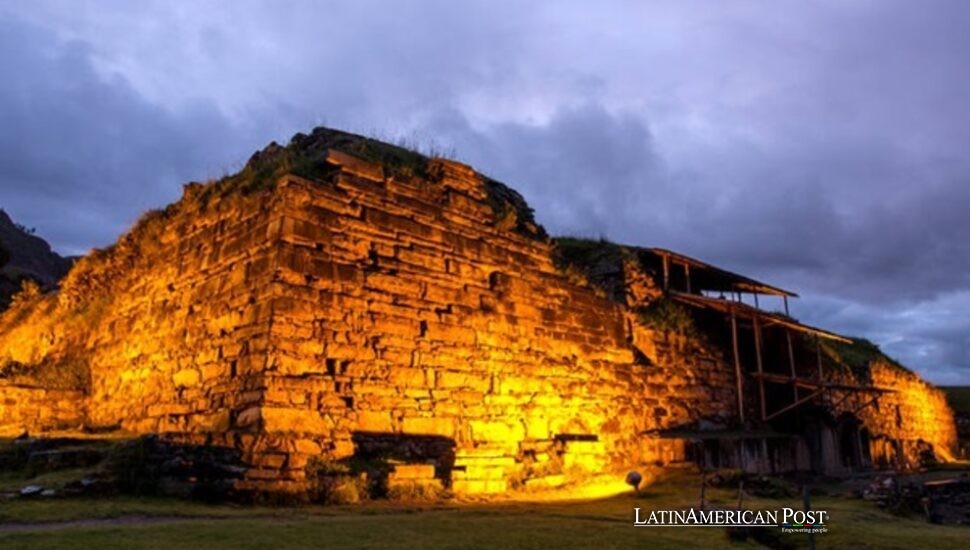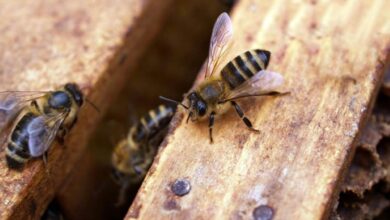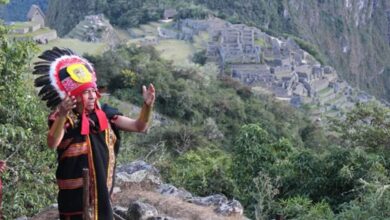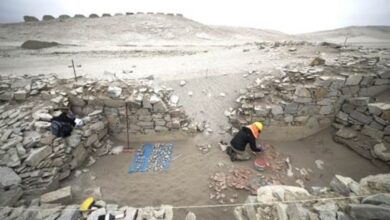Peru’s Narcotic Tales Leave Historians Sniffing For Answers

In a hidden labyrinth of stony corridors and secret rooms, archaeologists in Peru have uncovered hollowed-out bird bones once used for inhaling potent mind-altering substances. These discoveries unveil an elite culture of clandestine drug rituals in pre-Inca times and offer insights.
A Hidden Gallery of Secrets
Rituals were an essential element of social interaction in the pre-Hispanic Central Andes. Studies of the growth of lasting sociopolitical hierarchies in the area often show public ceremonies’ social and political importance. At the monumental site of Chavín de Huántar, which dates to the Middle-Late Formative Period (approximately 1200–400 BCE), as well as at other sites from the same era, researchers have long suspected that these rituals involved the use of psychoactive plants. However, until now, no tangible remains of such plants or chemical traces confirming the presence of psychoactive compounds have been found in likely ritual contexts.
Archaeologists recently unearthed a secret “drug room” dating back some 2,500 years in the north-central highlands of Peru. Tucked away at the sprawling pre-Inca ceremonial center known as Chavín de Huántar, the clandestine chamber had been sealed around 500 B.C. and left undisturbed until excavations began in 2017. Inside, researchers found 23 artifacts carved from animal bone and shell—spoons and hollowed-out tubes that, upon chemical analysis, revealed traces of nicotine and dimethyltryptamine (DMT), a potent hallucinogenic compound.
Daniel Contreras, an archaeologist at the University of Florida, told Live Science via email that these hollow bone tubes were essentially the ancient equivalent of modern high-rollers’ paraphernalia. “The tubes are analogous to the rolled-up bills that high-rollers snort cocaine through in the movies,” Contreras said. This intriguing find marks the first direct scientific confirmation that psychoactive substances were indeed consumed during ritual ceremonies at Chavín.
The Chavín site was a central hub of cultural and religious activity between 1200 B.C. and 400 B.C., predating the Inca empire by many centuries. Large plazas and monumental stone buildings dominated the landscape, and, over time, additions to the structures created a network of enclosed corridors and smaller interior rooms. These smaller spaces—referred to as galleries—served as the setting for exclusive ritual activities. The discovery of a sealed gallery brimming with “snuff tubes” and spoons hints at the critical, possibly secretive role that psychoactive substances played in the spiritual life of the Chavín people.
Hallucinogenic Clues in Ancient Bones
In a study published on May 5 in the journal PNAS, Contreras and a team of archaeologists analyzed the chemical residues on 23 artifacts discovered at Chavín. Through organic and micro botanical analysis, they identified nicotine from wild tobacco (Nicotiana) and the seeds and leaves of Vilca (Anadenanthera colubrina)—a plant known to contain DMT. The artifacts’ design suggests they were used as inhalers to snort finely ground powders made from these psychoactive substances.
“The tubes would have been used — we think — as inhalers,” Contreras noted to Live Science, “for taking the snuff through the nose.” These tubes, possibly fashioned from the wing bones of peregrine falcons (Falco peregrinus), were found primarily in restricted-access parts of Chavín, suggesting that substance use might have been carefully curated by an elite few who held power and influence.
Researchers posit that these rituals helped legitimize social hierarchy. Because the small gallery rooms could only accommodate a select group of people at a time, elite individuals likely enjoyed exclusive access to powerful mind-altering experiences. Through sacred ceremonies and highly charged sensory encounters, these privileged leaders could reinforce their status and present themselves as conduits to the divine.
The newly sealed gallery at Chavín held secrets that confirm a long-standing assumption: the site’s people harnessed psychoactive substances for ritual use, but the discovery of nicotine and DMT residues proves just how specifically these powerful botanical substances were employed. While archaeologists and anthropologists have long suspected the presence of drugs in these ceremonial practices, it is only now that concrete scientific evidence pinpoints which chemicals were inhaled by the participants.
Rituals, Hierarchy, and the Road to Empire
Chavín de Huántar is at a cultural intersection in the Andes. Interactions among different groups at this place formed complex belief systems. Before the Inca had power, societies like the Chavín established the foundation for large buildings, complicated religious organizations, and artistry with symbolism. Their new developments, the use of mind-altering substances for ritual practices among them, seem to have affected the following empires: the Tiwanaku, Wari, and, finally, the Inca.
Then again, discoveries illuminate how changing social structures developed in the region. According to Contreras, “One of the ways that inequality was justified or naturalized was through ideology—through the creation of impressive ceremonial experiences that made people believe this whole project was a good idea.” The elite restricted psychoactive snuff used to select group members, allowing them to produce spectacles, which reinforced the elite’s authority. Laborers and lower-status individuals were persuaded to support large-scale and cultural building projects.
The authors of the PNAS study emphasized that more investigations are needed to fully understand the breadth and depth of psychoactive substance use in the ancient Andes. There may well be other sealed spaces or hidden cavities at Chavín and beyond, waiting to reveal additional evidence of ritual drug use. As archaeologists search the site’s labyrinthine galleries, they hope to uncover more examples of carved bones, shells, or artifacts containing telltale chemical traces.
In the broader context of Andean history, such findings underscore that the region’s spiritual and social complexity was fueled, at least in part, by controlled ceremonial experiences of altered consciousness. By mastering both the architecture of intimidation—through towering stone edifices—and the controlled ingestion of hallucinogens, the Chavín priests and leaders harnessed a potent blend of spectacle and secrecy.
Historians note parallels between these early practices and later Inca rituals involving chicha (maize beer) and possibly other substances, suggesting a continuum of mind-altering ceremonies in the Andes. At the same time, each culture molded these substances to fit its religious narrative, leadership structure, and social imperatives. Thus, the newly unearthed drug room at Chavín provides a rare glimpse of an older, more mysterious chapter in this evolving tradition—one that would, centuries later, help shape the spiritual tapestry of one of the most remarkable regions in the ancient world.
Although modern travelers to Peru flock to well-known sites such as Machu Picchu, revelations about Chavín remind us that the Inca were neither the first nor the only society to push architectural, cultural, and pharmacological boundaries in these rugged highlands. Indeed, the hidden galleries of Chavín harbor stories that continue to surprise scientists and visitors alike, illuminating an ancient world where supernatural power, social stratification, and the inhalation of potent plant mixtures converged in secret ceremony.
As researchers expand their focus to other rooms buried in rubble, they hope to fill in more details of these clandestine rites. Each newly discovered artifact—a spoon carved from a seashell or a bone tube hollowed out for snuff—brings us one step closer to grasping how pre-Inca societies understood and wielded the influence of mind-altering plants. For the Chavín team, the actual reason for drug use in rituals perhaps only begins to show the ancient Andean way of thinking. Many questions stay open for study in the old passageways in the high areas of Peru.
This discovery is essential. It shows ritual activity was sometimes a factor as complex sociopolitical structures developed. In the Central Andes, proof indicates rituals helped form social bonds. Rituals also aided political plans. These activities often brought altered mental states. This report presents findings from independent microbotanical and chemical analyses that confirm the use of psychoactive plants in institutionalized rituals during the first millennium BCE.
Also Read: Mexican Technology Soars with Groundbreaking Pegasus Aircraft Launch
These findings indicate that even in their early stages, sociopolitically complex societies were incorporating psychoactive plants into their rituals. This direct identification of the contents of psychoactive paraphernalia from pre-Hispanic Peru enhances our understanding of the content and function of rituals at Chavín de Huántar and other early monumental centers.





